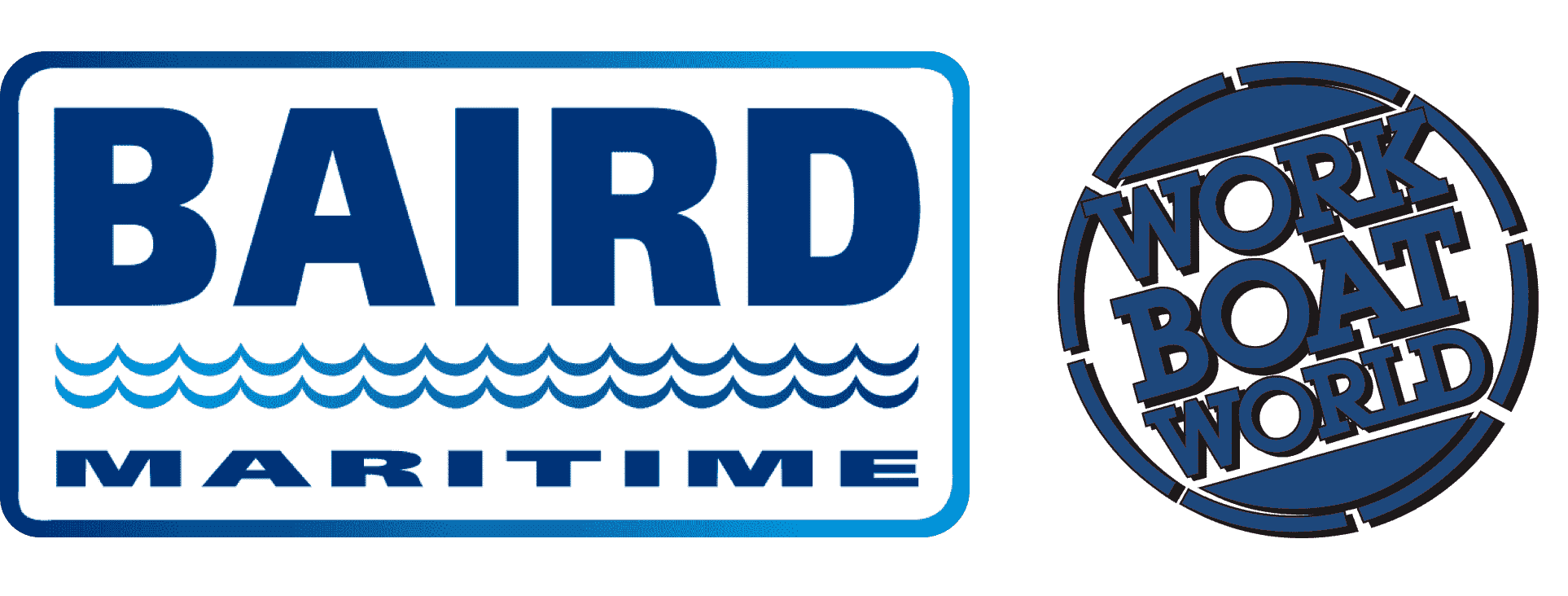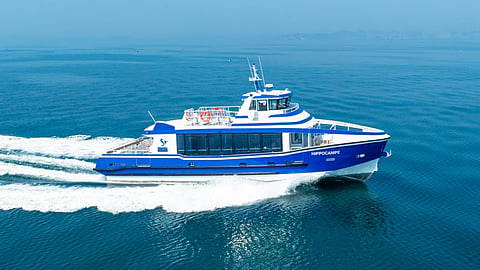VESSEL REVIEW | Hippocampe – French tour operator acquires 18-metre newbuild for coastal trips
French family-owned maritime tour company Croisières Alizé recently welcomed a new sightseeing vessel to its fleet.
Hippocampe (“Seahorse”) was built by ODC Marine for operation out of La Rochelle on France’s Atlantic coast. She will serve daily sightseeing cruises Fort Boyard and Île d’Aix.
“She will focus on coastal excursions and passenger transport, providing travellers with a smooth, comfortable, and scenic experience at sea,” Stéphane Gonnetand, co-Founder and CEO of ODC Marine, told Baird Maritime.
“Optimised for short- and medium-range routes, she combines reliability, efficiency, and passenger comfort, making her perfectly suited to the demands of modern coastal tourism.”
Gonnetand said Hippocampe represents a new generation of aluminium passenger vessels that combine contemporary design, acoustic comfort, and universal accessibility within a compact yet highly efficient platform.
Unique layout offering improved stability and visibility from the wheelhouse
“The owner’s brief combined both technical and human ambitions: to enhance the acoustic and visual comfort of cruises around Fort Boyard, to ensure full accessibility for all passengers, and to achieve greater efficiency and sustainability in daily operations.
“These priorities translate into tangible objectives: a quieter vessel, compliant with PMR standards throughout, and being optimised for fuel savings, lower maintenance and improved operating margins per seat.”
Gonnetand said that, beyond its functional goals, the investment also carries a strong symbolic aspect, as it forms part of a succession plan within Croisières Alizé to prepare the fleet and the company itself for the next generation of operators while reaffirming its long-term commitment to responsible coastal tourism in the region it serves.
“With a beam of 5.7 metres (19 feet) for an 18-metre (59-foot) hull, Hippocampe stands out for her remarkably wide beam-to-length ratio, offering a higher passenger capacity compared to conventional vessels of similar size.”
Gonnetand explained that such a design ensures a number of benefits such as greater stability, a fully cleared main deck salon, and the ability to position the wheelhouse on the upper deck, making it larger, more comfortable, and offering excellent all-round visibility for the crew.
“The result is a more spacious and pleasant passenger area on the main deck, enhancing the onboard experience.”
The main deck is equipped with four boarding gates, located forward and aft, to facilitate smooth embarkation and disembarkation. Passengers are seated on lightweight aluminium seats and Flexiteek 2G benches, combining durability, comfort, and low maintenance.
A bar with refrigerator provides onboard service, while two restrooms, including one fully accessible to persons with reduced mobility, ensure universal accessibility.
“The main salon is bright, naturally ventilated, and offers wide sea views, creating a relaxed and welcoming atmosphere for passengers,” Gonnetand told Baird Maritime. “On the upper deck, the wheelhouse stands out for its generous size and marine-grade reversible air conditioning, offering excellent visibility and comfort for the crew in all conditions.”
Two lateral piloting stations were added to improve precision and safety during docking manoeuvres, a configuration that Gonnetand said is usually reserved for larger vessels.
Designed for economic cruising ideal for coastal operation
Powered by two Volvo Penta D13 diesel engines each delivering 500 hp (370 kW), the vessel can reach 20 knots. Gonnetand said her real advantage lies in optimised cruising at around 12 knots, where fuel consumption is cut by nearly two-thirds compared to full-speed operation.
This propulsion setup was selected as it favoured economy, reliability, and environmental responsibility rather than speed.
“This new generation of vessels reflects the evolving priorities of coastal passenger transport – delivering a higher-quality travel experience while reducing operational costs and environmental impact,” said Gonnetand.
The electronics include a comprehensive Simrad navigation and communication suite, designed for reliability, clarity, and ease of use in coastal operations.
The system is built around a dual-display setup combining a NSS12 and a NSS9 multifunction display, integrating GPS and radar data via an external GPS antenna and a Halo 20 radar. Communication is ensured by two RS20S DSC VHF radios and a portable GMDSS VHF, providing redundancy and safety compliance.
Additional instruments include an Airmar SS60 echo sounder for depth measurement, an Ocean Signal EPIRB, and a SART transponder for emergency location and distress signalling. A network of eight cameras has also been installed, allowing real-time monitoring of the engine room and serving as an additional aid to navigation and safety.
Gonnetand said the electronics configuration offers a reliable, intuitive, and fully integrated bridge environment in line with ODC Marine’s commitment to operational safety and modern efficiency.
“The main challenge [in designing the vessel] was related to the break from conventional proportions by adopting a wider beam than on standard designs,” Gonnetand said. “This geometry provided excellent stability and allowed the wheelhouse to be moved to the upper deck, freeing the main deck for a more spacious and comfortable passenger salon.
“The trade-off of this design approach is that the vessel is less suited to high-speed operations. However, at 12 to 14 knots, she achieves exceptional fuel efficiency per passenger, combining comfort, economy, and environmental performance (i.e., 60 litres per hour at 12 knots full load cruising speed).”
Adopting an upgraded design philosophy for coastal sightseeing vessels
Gonnetand said that, from a builder’s perspective, the main challenge was in optimising the vessel’s energy performance per passenger in order to achieve the lowest possible fuel consumption while maintaining the highest standards of comfort, accessibility, and onboard experience.
“This required meticulous work on weight control, systems integration, and energy efficiency, ensuring that every structural and technical choice contributed directly to both durability and performance. Ultimately, the build process reflected ODC Marine’s guiding principle of refined simplicity, where every decision serves a clear purpose.”
The work on Hippocampe showed ODC Marine the importance of designing passenger vessels that consume less energy per seat and minimise environmental impact throughout their lifecycle.
“This project confirmed the relevance of developing boats that combine stability, comfort, and moderate cruising speeds to achieve exceptional efficiency without compromise,” Gonnetand told Baird Maritime. “It also underlined the importance of supporting our clients in understanding the benefits of operating at slightly lower speeds.”
ODC Marine already applies this philosophy across its range, with three vessels built on this same principle, according to the company's CEO.
"We will continue to develop this concept throughout our product line, promoting a new generation of vessels that are economically efficient, environmentally responsible, and perfectly suited to modern coastal transport.”


